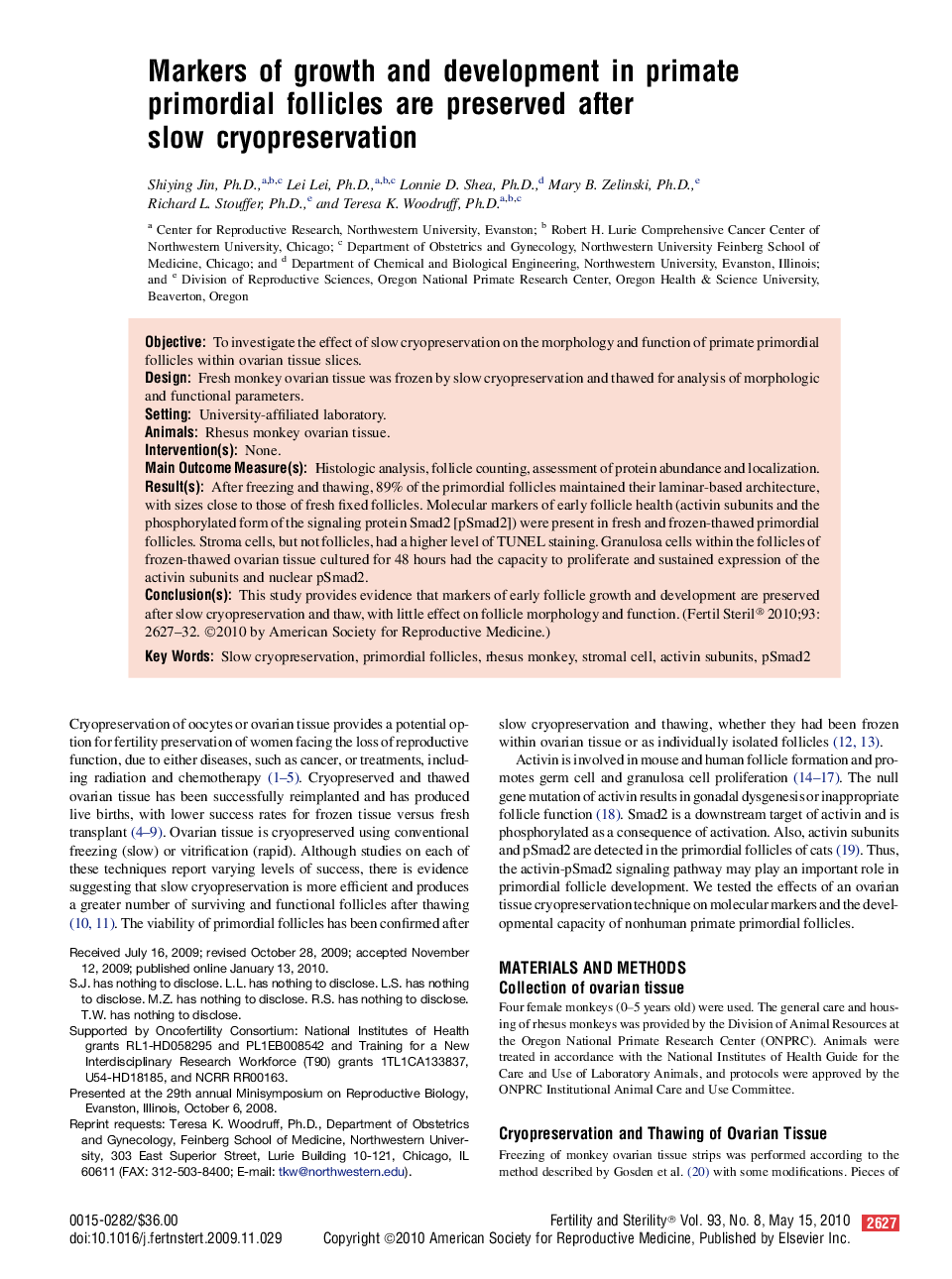| Article ID | Journal | Published Year | Pages | File Type |
|---|---|---|---|---|
| 3939680 | Fertility and Sterility | 2010 | 6 Pages |
ObjectiveTo investigate the effect of slow cryopreservation on the morphology and function of primate primordial follicles within ovarian tissue slices.DesignFresh monkey ovarian tissue was frozen by slow cryopreservation and thawed for analysis of morphologic and functional parameters.SettingUniversity-affiliated laboratory.AnimalsRhesus monkey ovarian tissue.Intervention(s)None.Main Outcome Measure(s)Histologic analysis, follicle counting, assessment of protein abundance and localization.Result(s)After freezing and thawing, 89% of the primordial follicles maintained their laminar-based architecture, with sizes close to those of fresh fixed follicles. Molecular markers of early follicle health (activin subunits and the phosphorylated form of the signaling protein Smad2 [pSmad2]) were present in fresh and frozen-thawed primordial follicles. Stroma cells, but not follicles, had a higher level of TUNEL staining. Granulosa cells within the follicles of frozen-thawed ovarian tissue cultured for 48 hours had the capacity to proliferate and sustained expression of the activin subunits and nuclear pSmad2.Conclusion(s)This study provides evidence that markers of early follicle growth and development are preserved after slow cryopreservation and thaw, with little effect on follicle morphology and function.
